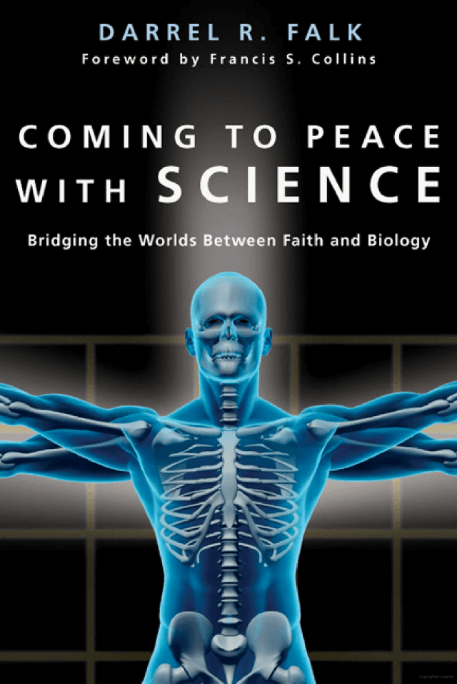Book Review: Coming to Peace with Science
Coming to Peace with Science:
Bridging the Worlds Between Faith and Biology
by Darrel R. Falk
Review by Denae O'Neil
Darrel R. Falk is professor emeritus of biology at Point Loma Nazarene University in San Diego, CA. In this book he combines his own testimony of coming to a secure faith in Christ with a diverse sampling of evidence for God creating the universe at his command by guiding and influencing a process that involves gradual change and evolution. Falk walks us through his faith journey as a young scientist who was gradually exposed to scientific evidence that challenged his interpretation of Scripture. Addressing Christians, he presents three possibilities for God’s method of creation: God created each individual species from scratch, one at a time; God created specific types of organisms in bursts of creative activity and then allowed microevolution to diversify; God is always creating and influencing gradual change among life on earth. Then gently, but convincingly, he presents scientific evidence for the third method of creation.
Falk begins with a close study of Genesis, then moves on to radiometric dating and fossil evidence that indicates creation of the earth was a slow and gradual process requiring billions of years. Falk goes into much detail, with many examples, of how the geographical distribution of life’s diversity, and the method of tracing lineage by tracking genes, provide convincing evidence that evolution has been the primary means for God allowing life to “come forth” on this earth.
Falk is not forceful or condescending in his presentation of evidence but always encourages readers to remember that the universe is in all ways responding to God’s creative command. The book concludes with a brief look at difficult theological questions that plague our thoughts when considering this theory: What about the law of thermodynamics? Aren’t we headed down a slippery slope of interpreting Scripture figuratively in all cases? What about human beings being made in the image of God? Although he does not delve into these questions with as much detail, he ends with a plea for unity and coming to peace with those in the family of God who think differently. Even though this book is essentially a convincing message for evolution, the theme of unity permeates the arguments and leaves one feeling not defensive or roused to fight, but with respect for others no matter what their perspective.
I enjoyed reading this book immensely—as a scientist and an interested Christian. The two words that sum up Falk’s writing are gentle and convincing. He writes from his heart and one begins to feel great empathy toward him even as a young middle schooler struggling with his studies of early man while holding to his Christian faith. He is honest about his doubts and allows the reader to question the science and the interpretation of Scripture. Always with humility, he presents well-articulated scientific evidence for evolution and an old earth. He draws on geology, physics, biology, astronomy, and genetics for his evidence and uses analogies from everyday life to explain these difficult concepts. The book is written for everyday readers, not scholars or scientists, yet includes an array of almost textbook-like evidence appropriate for secondary students, complete with diagrams and footnotes to original data.
This book is an excellent resource for those trying to understand how a Christian holds to an evolutionary view of life. But beware: Falk is convincing and might cause curious young earth creationists to question their view! Also this book is a helpful read for secondary students to use alongside biology textbooks. Whereas a science textbook may prove to be an obstacle for both student and parent in digging into these issues, this book addresses the questions through the lens of awareness of an amazing Creator is always in control and guiding in His every work.
A criticism of the book is that although he did an amazing job presenting evidence for scientific theory and relating his story as a brother in Christ, he failed to adequately address a number of difficult questions and left me yearning for more. But regardless of this weakness, this is an excellent resource for teachers, students, and laymen alike.

